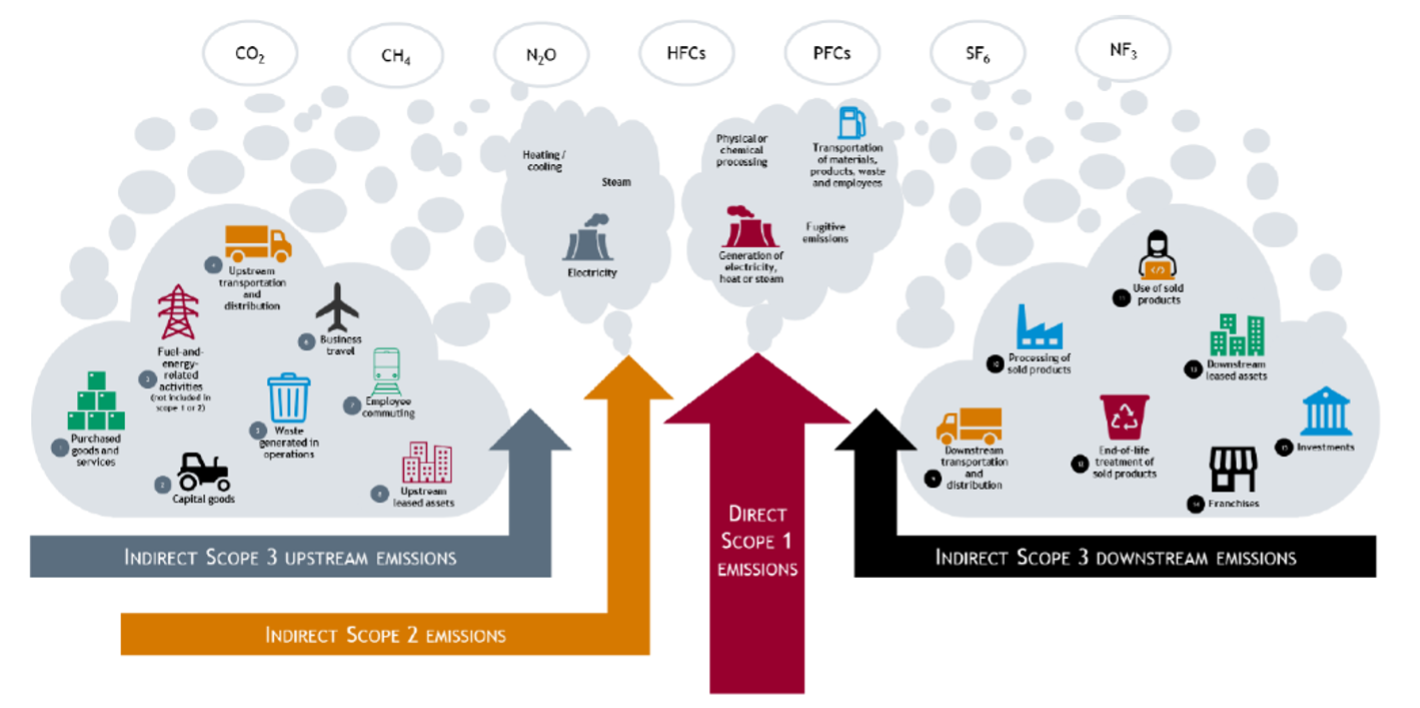Picture this: every business decision you make, from heating your office to choosing suppliers, creates an invisible trail of greenhouse gas emissions.
Regulatory requirements are increasing, customers are scrutinising environmental practices, and early adopters are already turning sustainability into profit. The question isn’t whether you’ll need to understand your carbon footprint; it’s whether you’ll be ready.
The Reality Check: What is carbon in business terms?
When businesses talk about “carbon,” they’re using shorthand for something bigger.
Your carbon footprint measures all greenhouse gases your business produces, expressed as carbon dioxide equivalent (CO2e). Think of it as your business’s climate impact scorecard.
While carbon dioxide from burning fossil fuels is the headline act, every time you fire up the heating, fuel a delivery truck, or power equipment with gas or oil, it releases CO2.
There are other contributors too.
Methane from natural gas systems, nitrous oxide from various industrial processes, and hydrofluorocarbons (HFCs) from your air conditioning all contribute to your carbon footprint at many times the rate of CO2.
Each gas heats the planet differently, so scientists convert everything to CO2e for easy comparison.
So, when you see “carbon emissions” on a report, you’re usually looking at the combined climate impact of all these gases rolled into one number.
Your business adds to this scorecard constantly, often in ways you’d never expect. The obvious culprits, heating bills and company vehicles, are just the beginning. The electricity powering your computers might come from a coal-fired power plant hundreds of miles away. Those office supplies delivered yesterday carry emissions from manufacturing, packaging, and transport. Even your employees’ daily commute counts.
The invisible trail stretches everywhere your business touches, creating a web of climate impact that most owners never see until they start measuring.
Why measuring your carbon footprint matters more than you think
Here’s the thing.
Measuring your carbon footprint isn’t just about being environmentally responsible; it’s also about understanding your business better.
When you map your emissions, you’re essentially conducting an energy audit that reveals inefficiencies you may not have been aware of.
The three types of emissions you need to know

Understanding your carbon footprint means getting familiar with three categories of emissions:
- Scope 1: Direct emissions. These are emissions from sources you own or control directly, including company vehicles and on-site fuel combustion, such as running generators. These emissions are your direct responsibility.
- Scope 2: Indirect emissions. This is simpler than it sounds. It refers to the emissions from the energy (electricity, gas) you buy. Even if your company uses renewable energy, you need to account for it in this category.
- Scope 3: Everything else. This includes emissions from your supply chain, business travel in vehicles you don’t own, employee commuting, and waste disposal. It’s often the largest category and the most challenging to measure, but it’s often where the biggest opportunities for improvement lie.
The competitive advantage of early action
Companies that start measuring their carbon footprint now are positioning themselves ahead of the curve.
Government procurement processes are increasingly requiring Carbon Reduction Plans. And B2B clients are asking suppliers about their environmental practices, and consumers are making purchasing decisions based on sustainability credentials.
Businesses that understand their carbon footprint today will be the ones setting the standards tomorrow. They’ll have cleaner operations, lower energy costs, and stronger relationships with environmentally conscious customers and partners.
Your next steps
The journey starts with a simple question: “What’s our carbon footprint?”
Don’t worry about perfection; start with the basics like gathering your energy bills, fuel receipts, and travel records.
The goal isn’t to solve climate change overnight; it’s to understand your business’s environmental impact so that you can make informed decisions about reducing it.
Now is the time to take control of your carbon footprint and your bottom line. Don’t wait for regulations to overtake you or competitors to pass you by – start by measuring what matters.
End-to-end support to help you map your emissions
At Collage & Co, we provide the tools and end-to-end support to help you map your emissions and uncover hidden efficiencies that could save your business money while reducing its environmental impact.
We can assess your carbon footprint, identify areas for improvement, and position your business as a leader in sustainable, cost-effective operations.
Remember, every major environmental initiative started with measurement. You can’t manage what you don’t measure, and you can’t improve what you don’t understand. Your carbon footprint is waiting to be uncovered, and it might reveal opportunities you never expected.
Reach out to discuss how we can tailor solutions to meet your unique needs.






